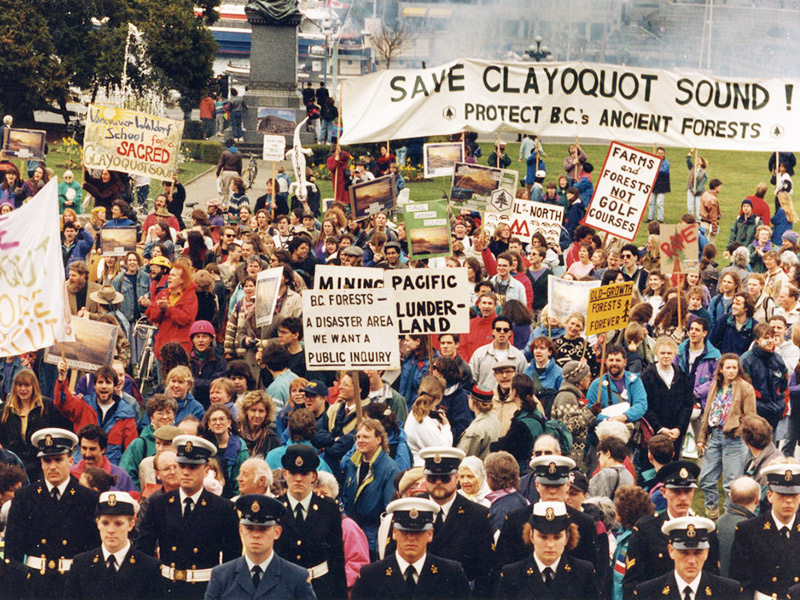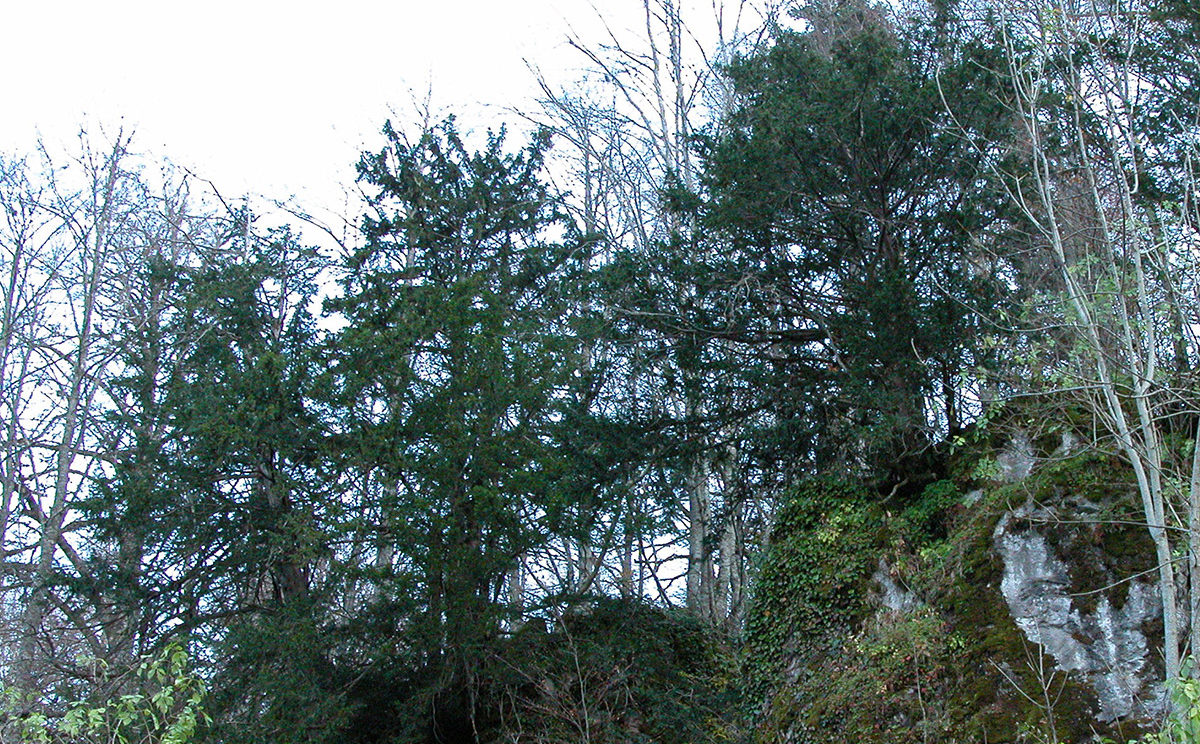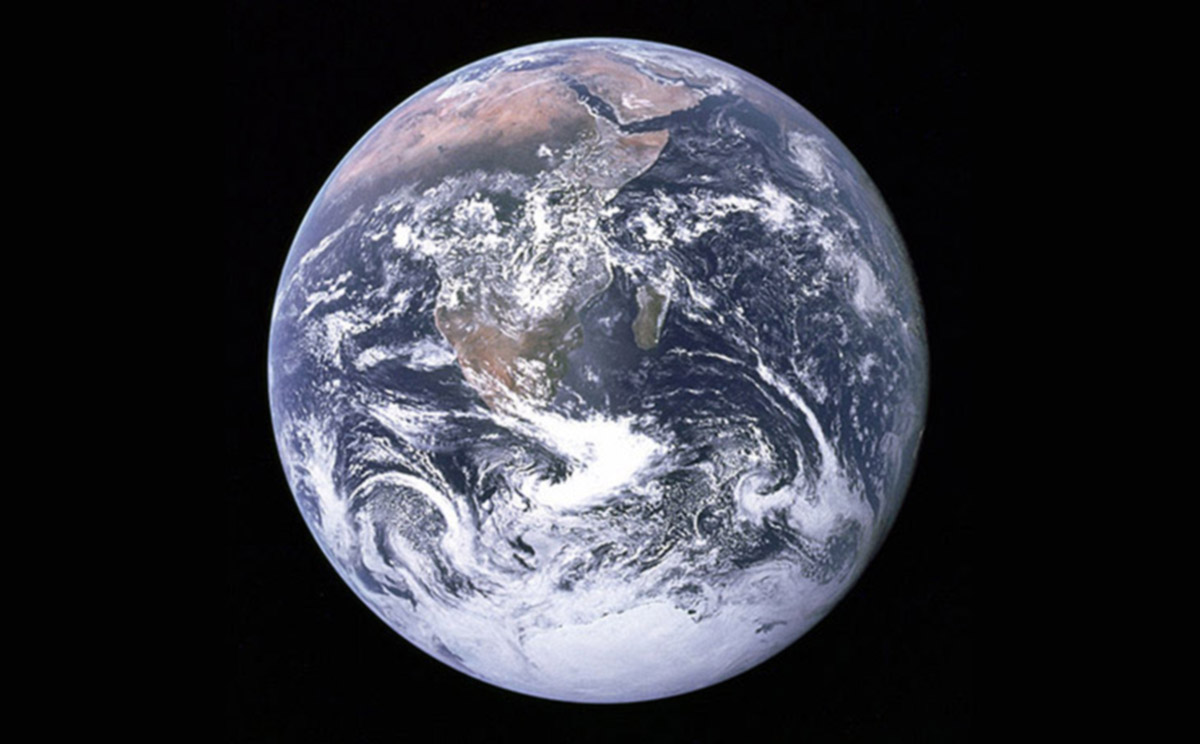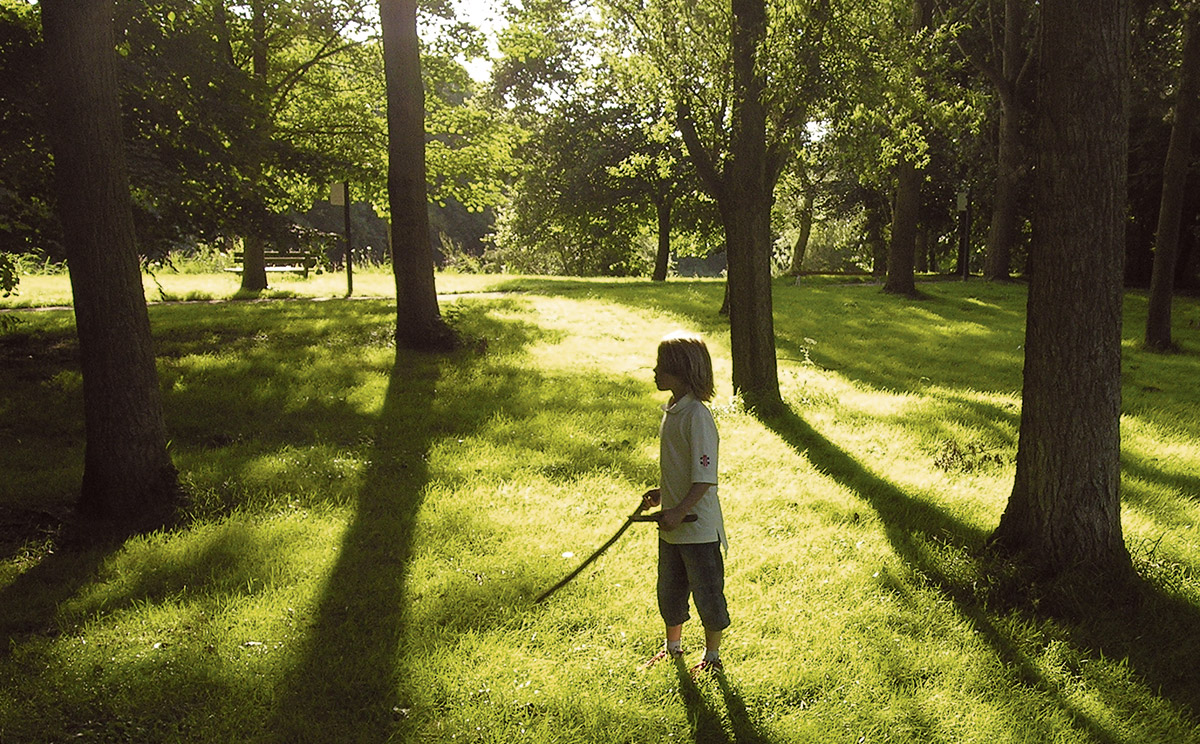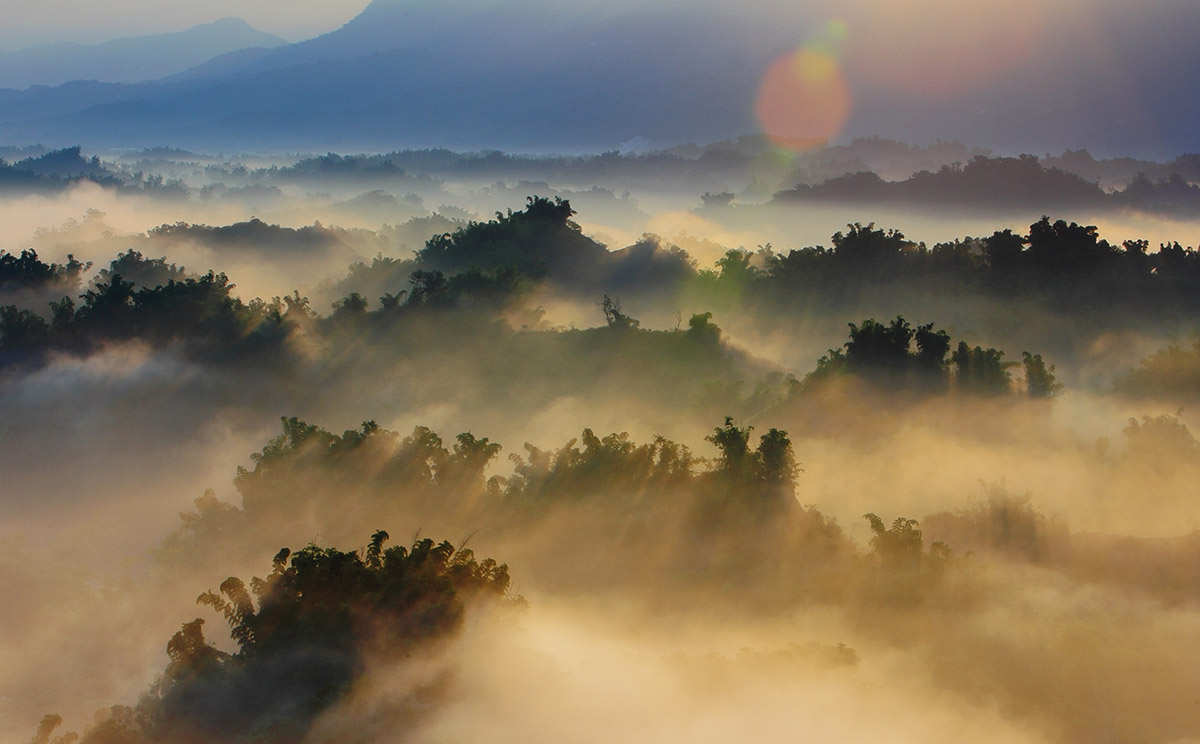Clayoquot Sound: Leading the way
Vancouver Island’s old-growth forests are among the most spectacular landscapes on Earth. Monumental trees reaching heights rivaling a thirty-storey ofice tower and up to about 1,500 years of age, forests providing a habitat for wolves, cougars, black bears, elk, five species of salmon in its streams, and rare and endangered species like certain goshawks, swifts and bats. The old-growth forests are also of great cultural and spiritual importance to First Nations who have been sustained by them for millennia.
Tragically, about 75 per cent of Vancouver Island’s old-growth forests have already been logged (June 2009). 6 per cent of the remainder are protected in national parks but the threat of logging continues.
The largest remaining tracts of old-growth forests on Vancouver Island are in Clayoquot Sound, a 260,000-hectare region surrounding the west coast village of Tofino. Protected by the rugged terrain, over 70 per cent of its old-growth forests are still intact.
In 1993, some 12,000 people, led by the Friends of Clayoquot Sound, joined the protests against logging. With almost 900 peaceful protesters arrested, it became the largest act of civil disobedience in Canadian history.
In 1998, the Clayoquot Memorandum of Understanding (MOU) was signed between the First Nations Chiefs,* the logging company and four environmental groups (Greenpeace, Sierra Club, Natural Resources Defense Council and the Wilderness Committee). The agreement declared that all of Clayoquot Sound’s remaining pristine valleys and islands are eehmis (Nuu-chah-nulth for ‘very special places’), and thus off-limits to logging. [Compare world tree news: Sacred Site to be recognised term]
* The Ahousaht, Tla-o-qui-aht, Hesquiat, Toquaht and Ucluelet are the five First Nation aboriginal title owners of Clayoquot Sound.
Clayoquot Sound continues to be at the forefront of old-growth forest conservation efforts on Vancouver Island, in British Columbia, if not in North America at all. The way for environmental organisations is to support enacting First Nations’ land-use planning initiatives into law.
In Clayoquot Sound, the signing of the MOU has led to the designation as a UN Biosphere Reserve (1998). But this alone is still no final protection from logging. To keep Clayoquot Sound moving towards true sustainability the British Columbia government needs to legislate protection for the Nuu-chah-nulth’s eehmis areas by enshrining First Nations’ land-use planning in law, and provide development funds to help local communities to develop forest-friendly business and local employment opportunities.
And since Clayoquot Sound generates an estimated 100 million US$ in eco-tourism each year, it should be possible.
Encorporating First Nations’ land-use plans into law would also lead to special protection for sacred trees. For example, the Hupacasath First Nation (one of the Nuu-chah-nulth tribes) has a land-use plan that includes increased protection for the old-growth redcedars (Thuja plicata), yellow-cedars (Callitropsis nootkatensis), and the ecosystems they support.
To keep up-to-date, or even support the Wilderness Committee in this course, visit their Clayoquot page.
Also check out the Clayoquot Biosphere Trust.

By loading the video, you agree to YouTube’s privacy policy.
Learn more
